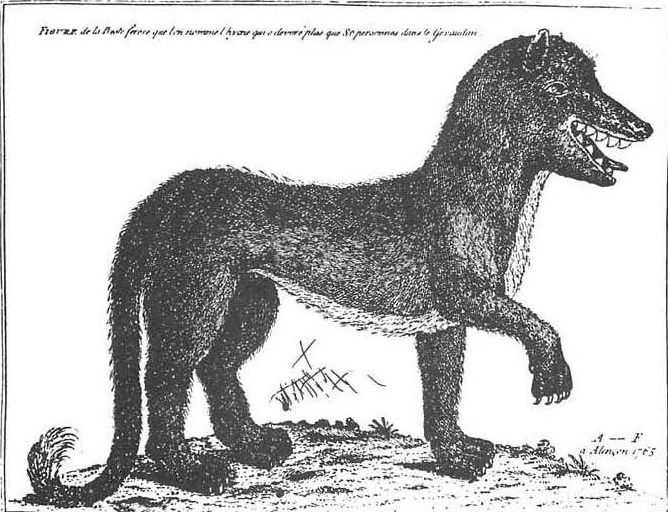Dogs

Andean Wolf

Beast of Gévaudan

Black Dogs

Black Shuck

Gally-Trot

Shunka Warak’in

The Beast of Cannock

The Wendigo

Wish Hound
The Dog family (Canidae) arose from primitive carnivores in the Eocene, about 35 million years ago, in North America. Common characteristics include elongated jaws, long legs relative to body size, five toes on the front feet and four toes on the hind feet, nonretractile claws, and an omnivorous diet. Most species are uniform in colouration, with special markings usually confined to the head and the tip of the tail. In size, canids
range from the Fennec fox (Fennecus zerda) that weighs about 3 pounds to the Gray wolf (Canis lupus) that weighs up to 175 pounds.
The earliest canids were the hesperocyonines of North America, small- to medium-sized predators of the Late Eocene, 35 million years ago. They were replaced by the borophagines, a group that ranged in size from foxes to lions and was dominant from the Miocene through the Pleistocene, 25–1.5 million years ago. An early true dog (Canis davisi) moved across the Bering land bridge to Asia and Europe in the Miocene.
About the size of a coyote, it ultimately gave rise to the foxes and wolves that colonized all of Eurasia. From 2 million to 700,000 years ago, wolves, coyotes, and foxes moved back into North America from Asia. All domestic dog
breeds are descended from the gray wolf, which was apparently domesticated at different times and places as early as 12,000 years ago.
Of the twenty canids in this list, only a handful could represent new or surviving species (perhaps the Hungarian Reedwolf or the Waheela); most will likely turn out to be colour morphs, deformed individuals, or misidentifications of known animals. Some, such as the Alien Big Dog or the Phantom Wolf, are undoubtedly multicausal.
SOURCE:
Mysterious Creatures – A Guide to Cryptozoology written by George M. Eberhart – Copyright © 2002 by George M. Eberhart











